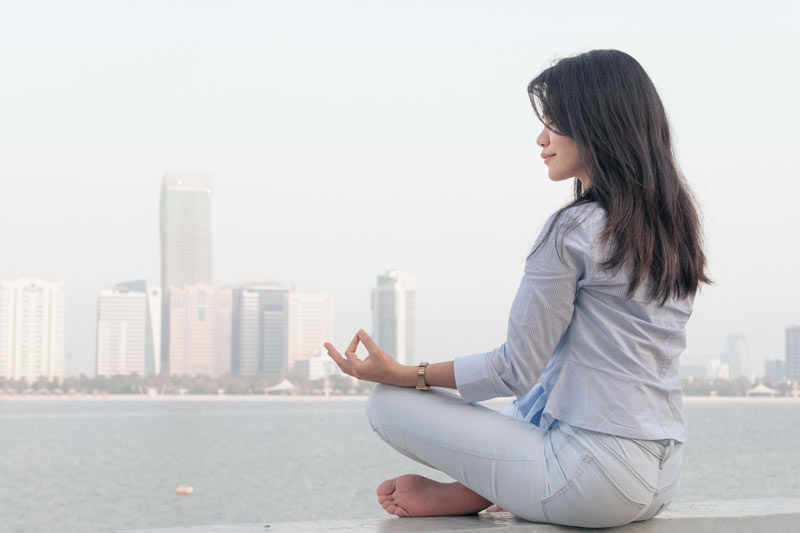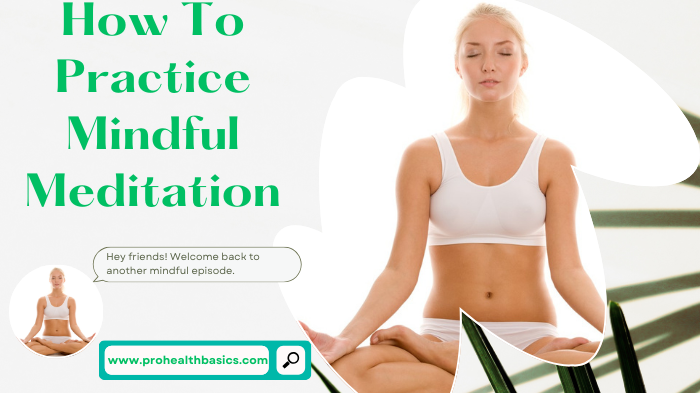As we age, we want to acclimate to the manners in which our bodies are unavoidably changing, yet it is essential to perceive that there are factors, intellectually and genuinely, we can assume command over. One method for turning out to be more in line with yourself is to rehearse careful reflection and to truly carve out opportunity to pay attention to everything that your bodies are saying to you. How To Practice Mindful Meditation Periodically we overlook the signs our bodies are giving us letting us know we really want to dial back or make a stride back.
Says Dr. Robert Dignitary, Organizer behind AROmotion. We have this voice toward the rear of our head telling us not to relinquish our energy but rather to deal with ourselves, we really want to comprehend and recognize the progressions we are encountering so we can carry out new and sound schedules and an incredible method for doing this is by rehearsing types of reflection.
How To Practice Mindful Meditation
What Is Mindful Meditation?

As indicated by verywell mind, Careful Reflection is a psychological practice that shows you how to dial back and sort out hustling considerations, clear your brain of pessimism and quiet your psyche and body. It offers an alternate way to deal with managing pressure and uneasiness by consolidating the methods of care and contemplation.
Characterized as a psychological state includes being completely centered around "the at this point" so you can recognize and acknowledge your contemplations, sentiments, and sensations without judgment.
Something extraordinary about Careful Reflection is that you don't have to utilize any props, be a specialist in contemplation, or devote an overflow of time to this wellbeing practice.
Read also: Try This Mindfulness Practice When You Feel Stuck
How can Mindful Meditation Help with Aging?

Rehearsing Careful Contemplation has numerous physical and mental advantages for seniors including further developing concentration, memory, rest, and critical thinking abilities.
Research additionally has demonstrated the way that care and contemplation can assist with decreasing agony and lift your general prosperity.
Is it true that you are prepared to assume command over your body and brain? Look at our tips for best practices while participating in careful contemplation.
Mindful Meditation Best Practices
Focusing on the breath and continually focusing on the intake and expiration is the simplest method of practicing mindfulness. The Siva Sutras, a work from the ninth century that is thought to have been penned by the sage Vasugupta and is part of the nondual mystical tradition of Kashmir Shaivism, describe this method in depth.
Despite its ancient beginnings, this method is still modern and useful. It may be used as a technique to repeatedly focus your attention on the here and now in practically any situation. Since mindfulness is such a broad concept, there are practically endless ways to practice it. You can experiment with several methods to find what suits you, such as:
- Mindful eating
- Walking with awareness
- Conscientious commuting
- Conscientious doodling or coloring
Finding meaningful and pleasurable ways to incorporate your mindfulness practice into your life is crucial, regardless of the approaches you choose. Children and teenagers may also practice mindfulness in a variety of age-appropriate and successful methods.
Read also: Mindfulness Meditation for Beginners
Get Comfortable

While you can rehearse Careful Reflection essentially anyplace whenever, we energetically suggest tracking down an agreeable spot in a quieting, relieving climate. Perhaps it's your number one seat or rambling out in the sand by the ocean side! Any place you pick, set yourself up to be helpless.
Acknowledge Your Thoughts
At the point when you initially start on your reflection process, you should figure out how to sort out and deal with your hustling considerations.
Take a couple of seconds, to start with, to recognize why you are thinking in any case and what you desire to receive in return. The objective isn't to be negligent yet rather to observe your considerations and continue on.
This is a period for your brain to push ahead instead of harp on considerations of stress and uneasiness.
Give Yourself Grace

As we referenced already, viewing as your middle and finding your normal will take some training, so be thoughtful to yourself if anytime you begin to let completely go over your contemplation practice.
On the off chance that you begin to get invaded by regrettable contemplations, stress, or dread, without judgment, pause for a minute to comprehend the reason why your brain went there and afterward return your middle and attempt once more.
Prioritize Breathing
An extraordinary method for trying not to be overpowered by your viewpoints is to zero in on your breathing examples. Become mindful of the vibe of breathing and feel your body breathe in and discharge air.
Find the breathing musicality that keeps you cool headed. Embrace every one of the faculties with regards to your breathing and utilize this to establish the vibe for your committed contemplation time.
Mindfulness benefits

Research has shown that mindfulness has several advantages. When John Kabat-Zinn created the Mindfulness-Based Stress Reduction (MBSR) program at the University of Massachusetts Medical Center in 1979, formal studies on mindfulness in the West got underway.
Kabat-Zinn integrated the mindfulness techniques and Buddhist teachings he had acquired from his numerous teachers with his study of Hatha yoga. Since then, there has been an explosion of study on MBSR and mindfulness in general, with several advantages.
This may consist of:
- Enhanced mental capacity
- Reducing the rate of brain aging
- lowering symptoms of anxiety, despair, and stress
- boosting one's feeling of wellbeing
- aiding in the treatment of pain
- improving the usual way of living for those with long-term illnesses
Read also: Interested in Meditation? Here Are the Basics
Improving brain health and slowing brain aging

A 2019 investigation When compared to non-meditators, first-time meditators who received 40 days of mindfulness meditation training showed notable alterations in brain structure, such as gray matter volume and cortical thickness, which were associated with reduced depression ratings.
According to 2020 research on 50 long-term meditation practitioners aged 24–77, meditators had far reduced rates of yearly brain tissue loss, particularly in areas of the brain linked to mood regulation, nervous system processing, and emotional cognitive integration.
According to the study, the findings support the growing theory that meditation may mitigate the negative consequences of aging on the brain.
conclusoin
A beneficial way to lower stress, increase attention, and establish a deeper connection with oneself is to engage in mindful meditation. You may develop a habit that makes your life more peaceful and clear by dedicating a little period of time each day. Consistency and patience are essential whether you're utilizing guided meditation, breathing exercises, or thought observation. Accept each mindful meditation session as a chance to be present and gentle with oneself; it's a journey rather than a goal. You'll probably experience more resilience and serenity in your daily life over time.
FAQ's: How To Practice Mindful Meditation
How to meditate in bed?
While your eyes are shut, become aware of your room. Visualise the roof, the ceiling, the walls and your body lying down. Then start to have a sense of your body from head to toes. Notice which points press deepest into the bed and then give your body permission to surrender.
What are the 3 A's of mindfulness?
Within that concept, there are three components of mindfulness: Intention - choosing to cultivate your awareness. Attention - to the present moment, sensations, and thoughts. Attitude - being kind, curious, and non-judgmental.
Can I meditate lying down?
It's absolutely fine to meditate while lying down, says Peloton yoga and meditation instructor Kirra Michel. While the standard upright, cross-legged lotus meditation position (or another seated variation) can help some stay grounded and focused, it's not necessarily the superior pose.
Can I learn to meditate on my own?
Meditation is something anyone can do, anytime, anywhere even someplace loud. It's easy to learn and involves some pretty basic techniques. Like anything new, the more we meditate, the more comfortable we'll get spending time with our mind. It doesn't take long to feel the benefits of a regular meditation practice.







